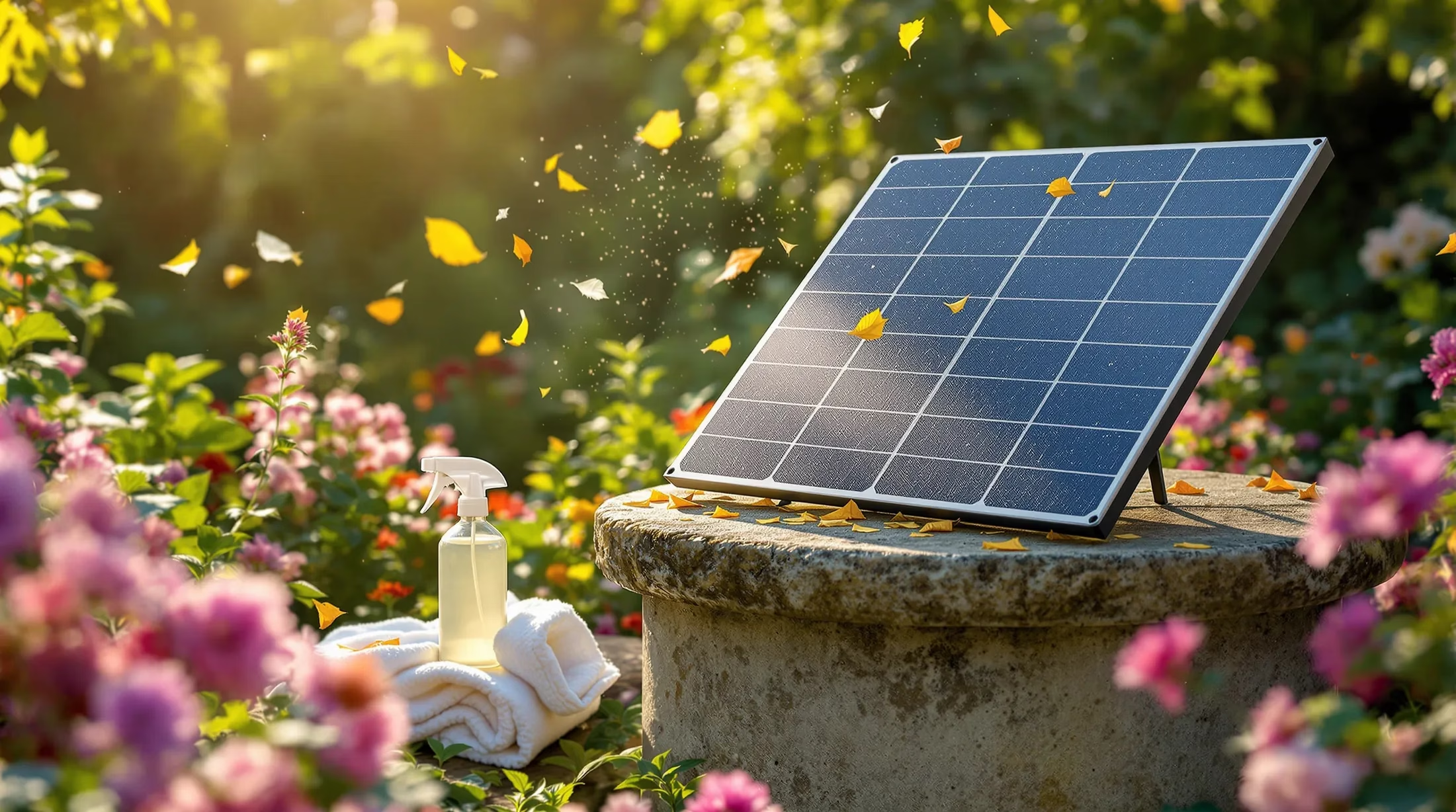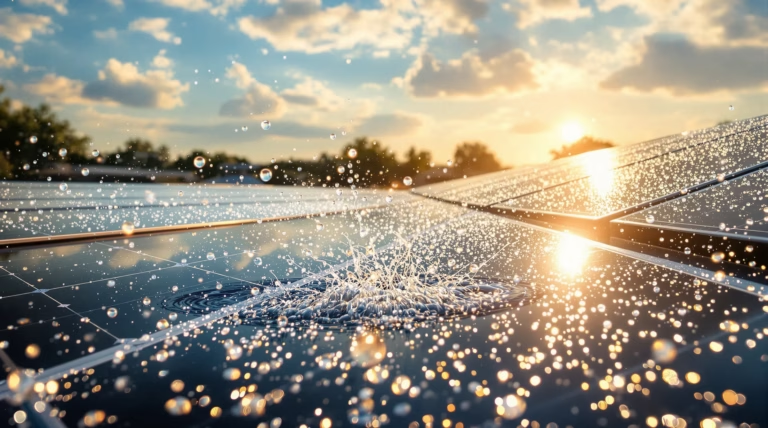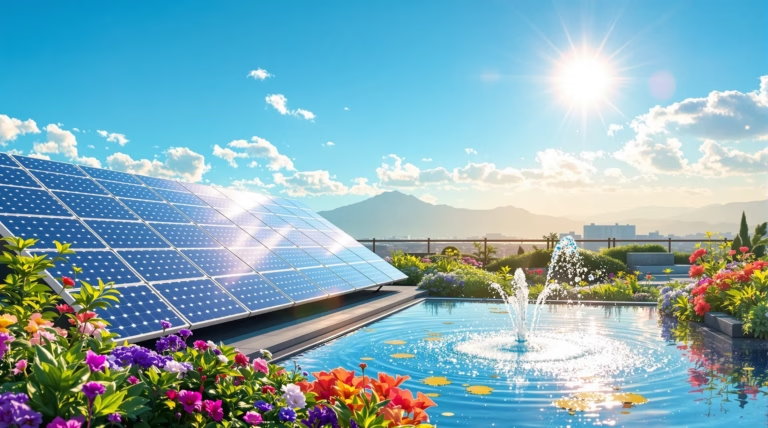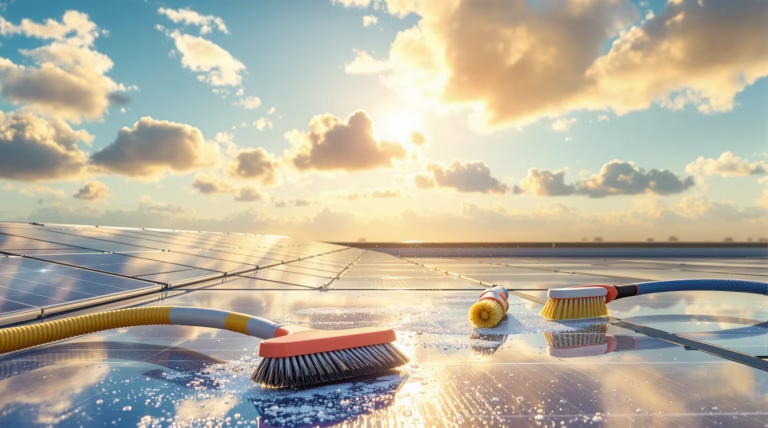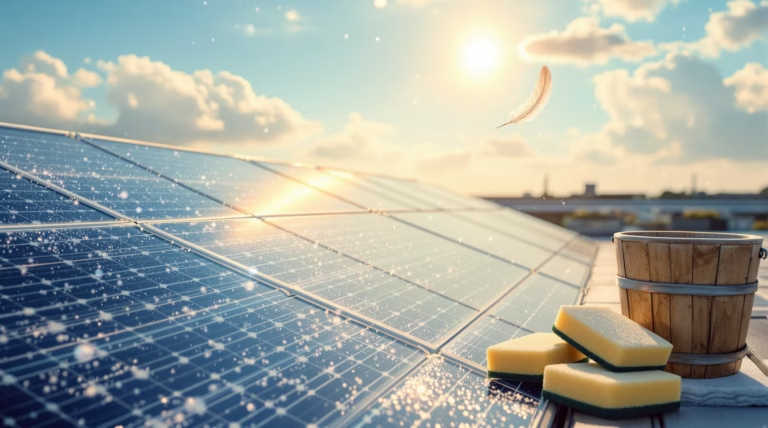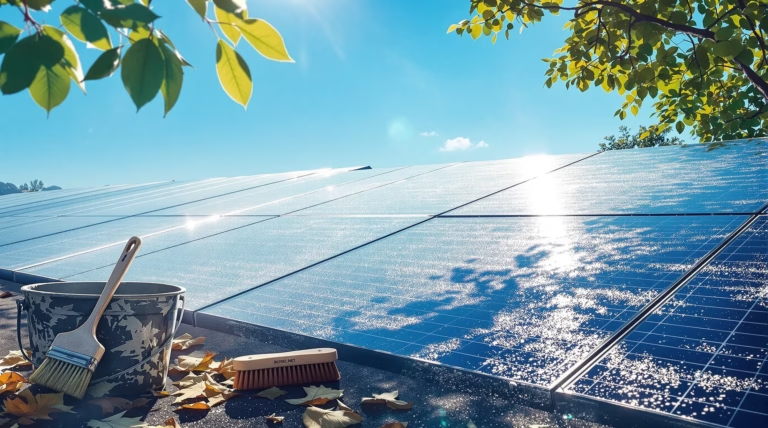How to Clean Solar Light Panel: A Step-by-Step Guide
Maximize the performance of your solar lighting system with proper maintenance and cleaning. Regular care not only extends the life of your panels but also ensures optimal energy production for brighter, longer-lasting illumination. Let’s explore the essential aspects of solar panel maintenance and learn how to keep your investment working efficiently.
Why Cleaning Solar Light Panels is Important
Solar light panels require regular maintenance to function at their peak efficiency. Over time, various contaminants like dirt, dust, pollen, and bird droppings create a barrier between sunlight and photovoltaic cells, significantly impacting their performance. Research indicates that dirty panels can experience a 15-25% reduction in energy production, resulting in dimmer lighting and shorter operational hours.
Impact of Dirt and Debris on Solar Panels
The accumulation of debris affects solar panels in multiple ways:
- Physical obstruction blocking sunlight (even thin dust layers reduce efficiency by 5%)
- Creation of ‘dead spots’ from heavy debris accumulation
- Increased strain on system components
- Potential micro-scratches from prolonged dirt exposure
- Formation of hardened residue during wet conditions
- Possible structural stress on mounting systems
Benefits of Regular Cleaning
- Restored maximum efficiency and peak performance
- Brighter illumination and extended lighting duration
- Enhanced system reliability during limited sunlight periods
- Extended equipment lifespan
- Prevention of corrosive material buildup
- Early detection of potential issues
- Reduced replacement costs
Tools and Materials Needed for Cleaning Solar Light Panels
Proper maintenance requires appropriate tools and materials to ensure effective cleaning without causing damage. While professional services are available, most maintenance can be performed as a DIY project with basic supplies.
Essential Cleaning Tools
| Tool | Purpose |
|---|---|
| Soft bristle brush | General cleaning and debris removal |
| Rubber-edged squeegee | Water removal without scratching |
| Non-abrasive sponge | Stubborn dirt removal |
| Spray bottle | Cleaning solution application |
| Microfiber cloths | Streak-free drying |
| Extendable handle | Reaching elevated panels |
Environmentally Friendly Cleaning Solutions
Choose eco-friendly cleaning solutions that protect both your equipment and the environment:
- Basic solution – mild dish soap with warm water
- Mineral deposit cleaner – ¼ cup white vinegar to 2 cups water
- Avoid harsh chemicals, abrasives, and alcohol-based cleaners
- Skip ammonia-based window cleaners that may leave residue
Step-by-Step Guide to Cleaning Solar Light Panels
The cleaning process should be performed during early morning or evening when panels are cool to prevent thermal shock. Always consult your manufacturer’s guide for specific recommendations and warranty conditions before beginning maintenance procedures.
Step-by-Step Guide to Cleaning Solar Light Panels
Preparing the Solar Panels for Cleaning
- Turn off the solar light system to eliminate electrical risks
- Perform a visual inspection for damaged components
- Remove loose debris with a soft brush or compressed air
- Choose early morning or evening when panels are cool
- Position yourself safely, preferably working from ground level
- Use extension tools for hard-to-reach panels
- Consider professional help for difficult-to-access installations
Cleaning Process for Solar Light Panels
Start with a gentle rinse using clean water to remove surface dust and dirt. For deeper cleaning, prepare a mild solution using a few drops of dish soap in warm water. Avoid harsh detergents that could damage the panel surface.
- Use a soft-bristle brush or non-abrasive sponge
- Clean in gentle circular motions
- Focus on areas with stubborn dirt or bird droppings
- Rinse thoroughly with clean water
- Remove excess water with a squeegee
- Dry with a microfiber cloth to prevent streaking
Post-Cleaning Maintenance Tips
| Maintenance Task | Frequency |
|---|---|
| Visual inspection | Monthly |
| Quick water rinse | During dry periods |
| Deep cleaning | Every 3-6 months |
| Professional inspection | Annually |
Document your cleaning sessions with photos for reference. Implement a regular maintenance schedule based on your local environment – urban areas with high pollution may require more frequent cleaning than rural locations. Remember that consistent, gentle maintenance yields better results than aggressive, infrequent cleaning.
Common Mistakes to Avoid When Cleaning Solar Panels
Proper maintenance is crucial for solar light panel longevity, but incorrect cleaning methods can cause significant damage. Understanding common mistakes helps protect your investment while maintaining optimal performance.
Using Harsh Chemicals
- Avoid ammonia-based cleaners that damage protective coatings
- Skip alcohol-based products that degrade photovoltaic cells
- Don’t use abrasive cleaners that leave residual film
- Prevent commercial window cleaners that create streaks
- Use only mild dish soap or diluted vinegar solutions
Ignoring Safety Precautions
- Always turn off power before cleaning
- Wear protective gloves to prevent cuts
- Use proper fall protection for elevated panels
- Ensure ladder stability on level ground
- Avoid cleaning during adverse weather conditions
- Never clean hot panels in direct sunlight
- Use extension tools instead of climbing when possible
Conclusion: Maintaining Solar Light Efficiency
Regular maintenance of your solar light panels is a simple yet crucial practice that significantly impacts their performance and longevity. By implementing proper cleaning techniques, you’ll ensure optimal efficiency, maximum sunlight capture, and enhanced energy generation. Well-maintained panels deliver brighter illumination, extended operating hours, and a longer system lifespan.
- Position lights to minimize dirt accumulation
- Conduct regular visual inspections
- Perform deep cleaning after extreme weather
- Monitor seasonal debris accumulation
- Address maintenance needs promptly
Creating a Maintenance Schedule
| Environment Type | Recommended Cleaning Frequency |
|---|---|
| Standard residential areas | Every 3-6 months |
| High pollen zones | Monthly during peak season |
| Construction areas | Monthly or as needed |
| Areas with high bird activity | Every 2-3 months |
Document your maintenance activities and track performance changes to identify potential issues early. Spring and fall serve as ideal times for comprehensive cleaning, preparing your system for summer usage and winter’s reduced sunlight. This systematic approach ensures reliable, efficient illumination throughout the year while minimizing maintenance effort.

